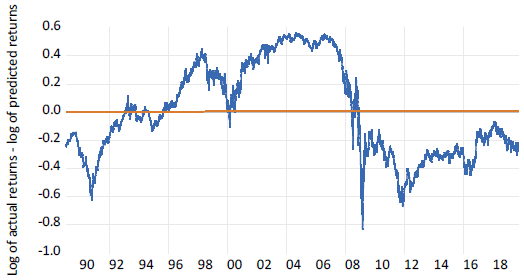| Author Name | Willem THORBECKE (Senior Fellow, RIETI) |
|---|---|
| Research Project | East Asian Production Networks, Trade, Exchange Rates, and Global Imbalances |
| Download / Links |
This Non Technical Summary does not constitute part of the above-captioned Discussion Paper but has been prepared for the purpose of providing a bold outline of the paper, based on findings from the analysis for the paper and focusing primarily on their implications for policy. For details of the analysis, read the captioned Discussion Paper. Views expressed in this Non Technical Summary are solely those of the individual author(s), and do not necessarily represent the views of the Research Institute of Economy, Trade and Industry (RIETI).
Macroeconomy and Low Birthrate/Aging Population (FY2016-FY2019)
East Asian Production Networks, Trade, Exchange Rates, and Global Imbalances
This paper investigates how expansionary monetary policy after the Global Financial Crisis (GFC) has affected the U.S. banking sector. In response to the GFC the Federal Reserve first lowered the overnight federal funds rate from 5.25% in August 2007 to zero in December 2008. It then turned to quantitative easing, purchasing housing agency debt, mortgage-backed securities, and longer-term Treasury bonds to stimulate the economy. While these policies helped the overall economy to recover, they may have harmed the banking sector. Banks accept safe short-term deposits and transform these into risky longer-term loans. They make a profit on the difference between the interest rate they earn on longer-term assets and the rate they pay of short-term deposits (the net interest margin). Low short-term interest rates and compressed spreads between long- and short-term interest rates may impair bank profitability. Bernanke and Gertler (1995) have shown that reduced bank profitability can hinder their ability to extend loans.
Bernanke (1993) noted that this is problematic because banks play a special role in channeling savings to promising borrowers. Financial markets are plagued by information imperfections. Savers release funds today for the promise of obtaining funds later. Whether they get repaid depends on the character of the borrower, the quality of the investment, the collateral that the borrower can provide, and other factors. The lender needs to consider these items and not just interest rates. Asymmetric information can thus hinder the flow of funds from savers to small businesses and other borrowers whose quality is hard to evaluate. Banks can bridge imperfect information problems because they have a comparative advantage due to: 1) economies of specialization, as lending officers gain expertise in a particular industry; 2) economies of scale, as it is cheaper for bank to evaluate a loan than for small savers to; and 3) economies of scope, as it is cheaper to provide lending services together with other services.
This paper investigates how lower short-term rates and falls in the spread between long-and short-term rates affect bank profitability. To do this it investigates how these variables affect bank stock prices. Stock prices provide valuable information since they are the expected present value of future cash flows. The results indicate that falls in short rates and in the spread have caused large drops in bank stock returns after the GFC. Banks are also facing competitive pressures from Fin Tech firms and big technology firms. Their performance after the GFC has lagged other parts of the U.S. economy. This is seen in Figure 1, that shows the unexplained part (the residual) from regressing the return on U.S. Bank Stock Index on the return on the overall U.S. stock market. Bank stocks after the crisis are much worse than one would predict. Banks are thus vulnerable to negative shocks that could arise during a downturn or a crisis. The Fed should take account of the impact of their policies on the banking sector, since an interruption on the flow of credit through the financial system could prevent funds from going to the most promising firms. This misallocation of resources could then hinder long-term economic growth.

- Reference(s)
-
- Bernanke, B. (1993). Credit in the Macroeconomy. FRBNY Quarterly Review 18: 50-70.
- Bernanke, B. and M. Gertler. (1995). Inside the Black Box: The Credit Channel of Monetary Policy Transmission. Journal of Economic Perspectives 4: 27-48.

